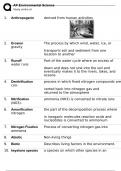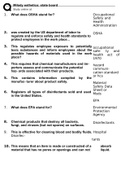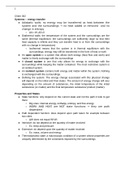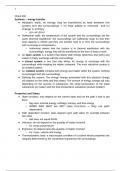Chem 302 systems - Study guides, Class notes & Summaries
Looking for the best study guides, study notes and summaries about Chem 302 systems? On this page you'll find 4 study documents about Chem 302 systems.
All 4 results
Sort by
The First Law of Thermodynamics: Energy Work and Heat

-
AP Environmental Science
- Exam (elaborations) • 83 pages • 2023
-
- $14.09
- + learn more
1. Anthropogenic derived from human activities 2. Erosion The process by which wind, water, ice, or gravity transports soil and sediment from one location to another 3. Runoff Part of the water cycle where an excess of water runs down and does not sink into the soil and eventually makes it to the rivers, lakes, and oceans. 4. Denitrification process in which fixed nitrogen compounds are con- verted back into nitrogen gas and returned to the atmosphere 5. Nitrification ammonia (NH3) is conv...

-
Milady Esthetics State Board Test All
- Exam (elaborations) • 62 pages • 2023
-
- $14.49
- + learn more
1. What does OSHA stand for? Occupational Safety and Health Administration 2. was created by the US department of labor to regulate and enforce safety and health standards to protect employees in the work place... 3. This regulates employee exposure to potentially toxic substances and inform employees about the possible hazards of materials used in the work place? 4. This requires that chemical manufacturers and im- porters assess and communicate the potential haz- ards associated with their ...

-
Chem 302 Thermodynamics Systems-energy transfer.
- Summary • 43 pages • 2022
-
- $5.49
- + learn more
Chem 302 Thermodymics Systems-energy transfer. ● Adiabatic walls: no energy may be transferred as heat between the system and the surroundings → no heat added or removed and no change in entropy ○ ∆U=-W; ∆S=0 ● Diathermal walls: the temperature of the system and the surroundings are the same (thermal equilibrium: the surroundings are sufficiently large so that their heat capacity is infinite and they can transfer heat to or from the surroundings with no change in temperature) ...

Study stress? For sellers on Stuvia, these are actually golden times. KA-CHING! Earn from your study resources too and start uploading now. Discover all about earning on Stuvia



